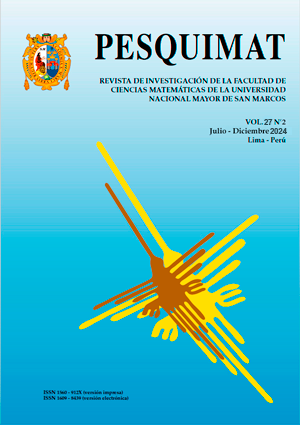Influence of discordant data on the Tucker3 model
DOI:
https://doi.org/10.15381/pesquimat.v27.i2.28291Keywords:
Tucker3Abstract
The present article addresses the assessment of the Tucker3 Model through the analysis of macroeconomic datasets from the departments of Peru spanning the period 2007-2021. The focus is on quantifying the impact of discordant observations, particularly in relation to Lima and Callao, on the structure of the solution, the determination of dimensions, and the representation of pathways in their respective components. The results underscore the significant role of Lima and Callao in the total variability, although this impact does not entail structural modifications in the model. Nevertheless, an influence is observed in the relative importance of components across different pathways in the Tucker3 Model.
Downloads
Published
Issue
Section
License
Copyright (c) 2024 José Luis Vásquez Pérez, Emma Cambillo Moyano

This work is licensed under a Creative Commons Attribution-NonCommercial-ShareAlike 4.0 International License.
THE AUTHORS RETAIN THEIR RIGHTS:
a) The authors retain their trademark and patent rights, and also on any process or procedure described in the article.
b) The authors retain the right to share, copy, distribute, execute and publicly communicate the article published in Pesquimat magazine (for example, place it in an institutional repository or publish it in a book), with recognition of its initial publication in the Pesquimat magazine.
c) The authors retain the right to make a later publication of their work, to use the article or any part of it (for example: a compilation of their works, notes for conferences, thesis, or for a book), provided that they indicate the source of publication (authors of the work, magazine, volume, number and date).






